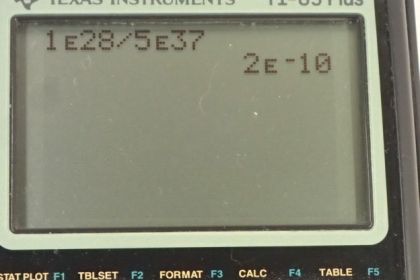Question
The Crab Nebula (see Figure 7.41) pulsar is the remnant of a supernova that occurred in A.D. 1054. Using data from Table 7.3, calculate the approximate factor by which the power output of this astronomical object has declined since its explosion.
Final Answer
Solution video
OpenStax College Physics for AP® Courses, Chapter 7, Problem 30 (Problems & Exercises)

vote with a rating of
votes with an average rating of
.
Calculator Screenshots
Video Transcript
This is College Physics Answers with Shaun Dychko. The Crab nebula contains a pulsar that used to be a supernova and this question is asking by what factor has the power output originally of the supernova— 5 times 10 to the 37 watts— decreased to make the present power output which is that of the Crab nebula pulsar— 10 to the 28 watts. So we solve for x by dividing both sides by P naught here and we get that this factor is the final output which is 10 to the 28 watts— the output of the pulsar— divided by the original output of the supernova and it's power output is decreased by a factor of 2 times 10 to the minus 10.
